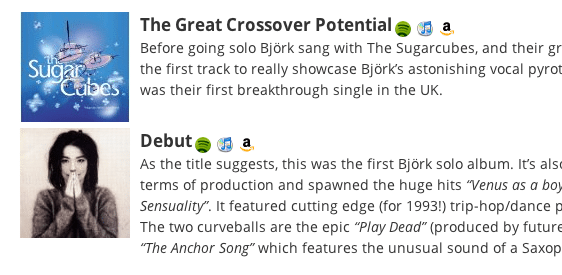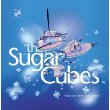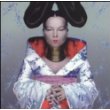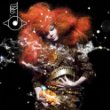Spend a little while making small talk at a party and eventually someone will ask you to name your favorite recording artist… But for a music geek giving a definitive answer is not unlike being asked which one of your children is your favourite! After a bit of “umming” and “ahhing” with a suitably furrowed brow I will often answer: Björk.
I’ve been a fan of Björk since the first time I saw the video for Big Time Sensuality. Not only was my thirteen year old brain accosted by the sight of what appeared to be some kind of space-pixie cavorting on the back of a truck, but I was captivated by that voice and wait a minute, did she just meow?!
I’m not really one to get star-struck and if you work in broadcast centers for many years you tend to become somewhat blasé about spotting celebrities. However on the one occasion when I saw Björk while walking into a radio station I was so excited I walked straight into a door! Thus blowing my one chance at looking cool in front of my musical hero…
Björk has produced a number of wildly differing albums over her career and it can be somewhat difficult for the baffled newcomer to know where to start, especially as some of her albums (such as Medulla or Drawing Restraint #9) are really not for everyone. For this reason I decided to just give a quick glimpse of each, to provide lots of ways for you to start exploring her sound. Maybe you’ve heard a few of her hits. Perhaps you’ve taken a quick like or dislike to her but are curious to explore further. Or maybe you’re asking yourself “who is Björk?”. Whatever the case, I hope the guide below will serve as a kind of Björk introduction!
A Brief Guide To Björk’s Discography
The Great Crossover Potential![]()
![]()
![]()
Before going solo Björk sang with The Sugarcubes, and their greatest hits album features “Birthday”, the first track to really showcase Björk’s astonishing vocal pyrotechnics. It also includes “Hit”, which was their first breakthrough single in the UK.
Debut![]()
![]()
![]()
As the title suggests, this was the first Björk solo album. It’s also the most conventional album in terms of production and spawned the huge hits “Venus as a boy”, “Human Behaviour” and “Big Time Sensuality”. It featured cutting edge (for 1993!) trip-hop/dance production, courtesy of Nele Hooper. The two curveballs are the epic “Play Dead” (produced by future Bond composer David Arnold) and “The Anchor Song” which features the unusual sound of a Saxophone Trio.
Post![]()
![]()
![]()
Björk’s second album finds her at the peak of her commercial success – and also at her most pop-focused. Tracks such as “Isobel” and “Hyperballad” display some of the skittering glitch beats she would become known for, but it is the musical theatre inspired “It’s oh so quiet” which became her biggest hit, despite being unlike anything else in her output! Björk would never again be this optimistic and poppy. A narrowly-avoided acid bomb attack by a crazed fan caused her to leave the UK and focus on a more avant garde approach to music.
Homogenic![]()
![]()
![]()
This is my personal favourite album. It is far darker and more mature in tone that her previous work and is shaped by the sounds of snow and rock from her native Iceland. There is a greater focus on glitchy beats and lush strings. The centre piece of the album is the “Majestic Bachelorette”.
Vespertine![]()
![]()
![]()
This was Björk’s fourth album which will be discussed in more detail in the next article.
Volta![]()
![]()
![]()
Volta is a joyous return to more upbeat material, driven by african and hip-hop beats from super producer Timbaland. The album is Björk’s most overtly political and caused controversy when she dedicated the song “Declare Independence” to Tibet during a performance in Shanghai!
Biophilia![]()
![]()
![]()
Björk’s latest release, dedicated to science and nature. It features an innovative companion series of iPad apps. Many tracks feature unconventional time signatures and unusual instruments (such as a Tesla coil on the track “Thunderbolt”!)
Originally I’d planned on writing a single article about a Björk song for the Listen Close series but found I had quite a challenge in choosing just one song to encapsulate the sound of Björk! She is quite unusual in having no fixed band line-up and a tendency to change the instrumentation completely for each album. For example Homogenic employs strings and glitch techno beats, Volta is mainly brass with African rhythms and Medulla is mostly a cappella.
After some deliberation (and the not overly arduous task of relistening to all my Björk CDs) I finally decided on Pagan Poetry from the album Vespertine. We’ll be taking a look at that track in depth next time.
Until then, try diving into some of the albums above and exploring the wild and varied sounds of Björk. Whatever you know of her already, and whatever your feelings may be about her music, I can almost guarantee you’ll discover something to surprise you…
















It has been pointed out that Medulla was left out of the discography.
This was done on the grounds of it being a bit too odd and inaccessible. Which is clearly nonsense.